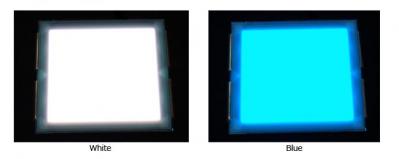In March 2017 Konica Minolta and Pioneer announced that the two companies are set to merge their OLED business unit, and on June 2017 the new 50:50 joint venture, called Konica Minolta Pioneer OLED, was officially established.
Pioneer was recently acquired by Hong Kong private equity firm Bearing Private Equity for $904 million, and the company is now trying to focus its business, and we learned that it has decided to quite the OLED lighting market. KMPO has been closed and all assets and employees were moved to Konica Minolta. This is quite sad news regarding Pioneer who's been active with OLED lighting for many years (see below).
KMPO was launched with an initial capital of around $4.5 million and was set to combine KM's roll-to-roll flexible OLED production equipment and technology with Pioneer’s achievement in OLED panel mass-production and market rollout and its car electronics business know-how - and indeed focus on automotive lighting (in addition to simple flexible OLED lighting panels integrated into packaging).
In March 2014 Konica Minolta announced that it is starting to construct a R2R flexible OLED lighting fab, hoping to start production in the fall of 2014. This fab entered production later than planned, but it has yet to reach real mass production capabilities. Konica invested ¥10 billion (almost $100 million) in this fab, which was supposed to have a monthly capacity of a million panels. KM's fab produces both white and color-tunable flexible panels. Konica Minolta also holds the world's OLED efficiency record with a 139 LM/W panel - but this is a lab result that is not easily transferred to mass produced panels.
Pioneer's Verbatim started to distribute color-tunable panels produced by Mitsubishi and Pioneer back in May 2011 (we posted a hands-on review of one in 2012) - producing using an evaporation process. In early 2014, Pioneer and Mitsubishi Chemical announced that they began to mass produce OLED lighting modules made with the wet coating process.
Pioneer and Mitsubishi also developed a color-tunable and dimmable OLED lighting panel produced using Mitsubishi's wet-coating process, and the companies say that this panel can be produced for less than one-third of the cost of OLEDs made with regular evaporation-based production methods. Now that Pioneer is no longer active with OLED lighting, it is not clear what will happen to Mitsubishi's OLED lighting projects.


